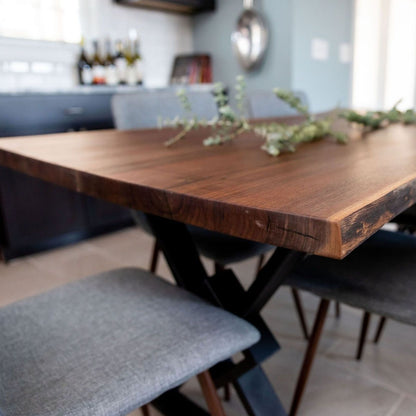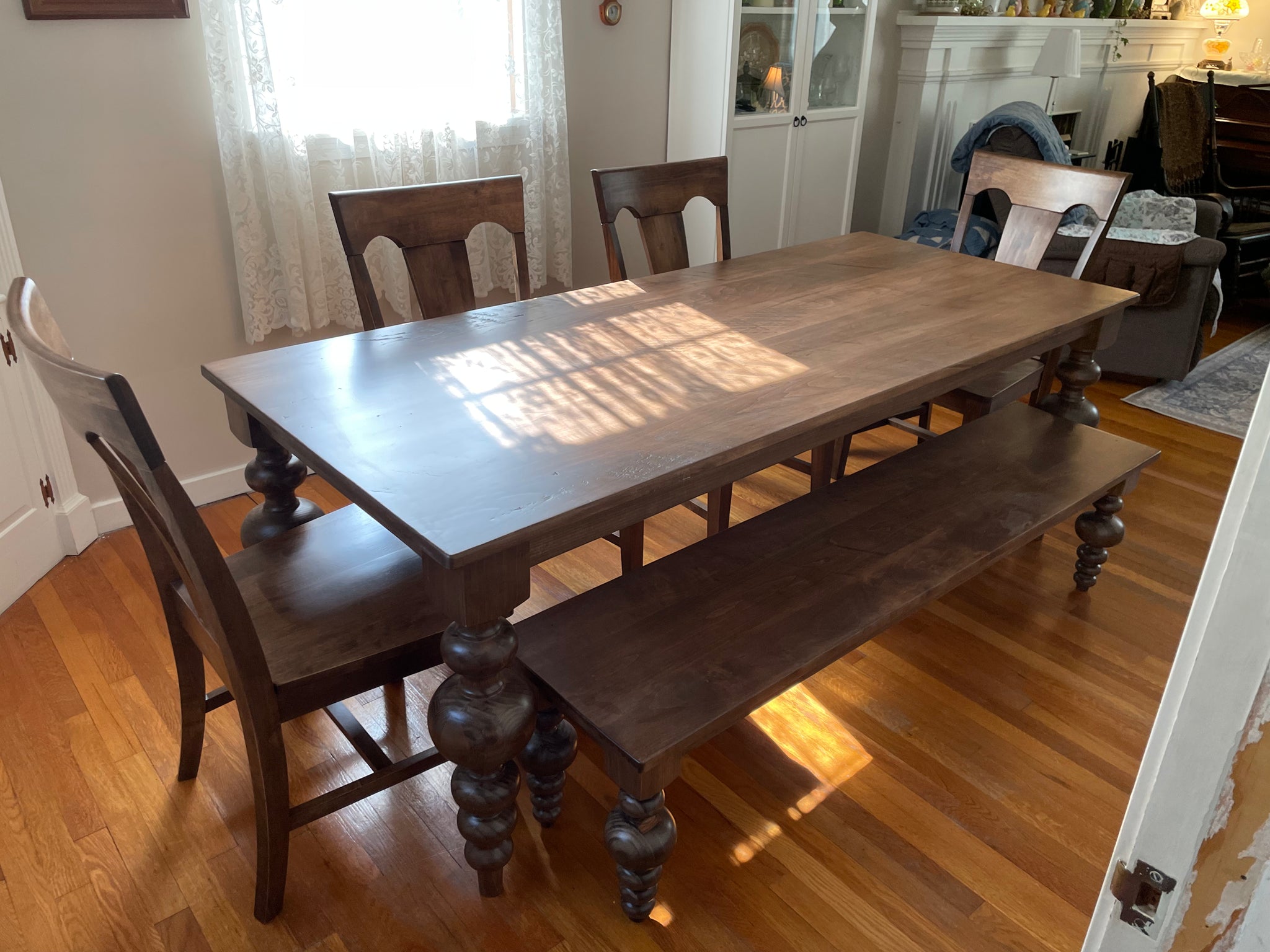How the Right Dining Room Table Legs Can Complete Your Dining Room Look
How the Right Dining Room Table Legs Can Complete Your Dining Room Look
Blog Article
From Standard to Modern: Discover the Perfect Eating Room Table Legs for Your Design
The selection of dining-room table legs plays a pivotal duty in defining the overall personality of your space, bridging the gap between conventional craftsmanship and contemporary aesthetics. While classic designs such as cabriole and turned legs evoke a sense of classic sophistication, contemporary styles like barrette and geometric alternatives offer an opportunity for striking aesthetic rate of interest. Evaluating the right balance between these styles requires a nuanced understanding of your existing decoration and individual taste. As you think about these aspects, the question continues to be: exactly how can you seamlessly incorporate these varied leg styles to produce an unified dining experience?
Understanding Table Leg Styles
The range of dining-room table leg designs can significantly influence both the looks and functionality of the area. Each leg design contributes unique functional attributes and visual elements, accommodating diverse layout preferences and usage needs. Comprehending these styles is essential for selecting the ideal table that aligns with your total indoor design vision.
For example, tapered legs provide a tidy, traditional appearance that can enhance a room's sophistication, while stand bases offer security and maximize legroom, making them suitable for smaller sized areas. Barrette legs, a hallmark of mid-century modern design, present a commercial style, permitting a ventilated, open feel. Trestle legs evoke rustic beauty, providing robust assistance and a sense of eternity.
Wooden legs can bring warmth and structure, whereas metal options often convey a sleek, contemporary ambiance. Inevitably, understanding table leg styles is vital for developing a cohesive eating area that reflects individual style while making sure usefulness and convenience.
Typical Table Leg Options
When picking eating space table legs, conventional alternatives commonly embody classic sophistication and workmanship. These styles show a rich heritage and a commitment to top quality, making them suitable for those that appreciate timeless aesthetic appeals.
One of one of the most famous traditional leg styles is the cabriole leg, identified by its elegant curved shape. This style frequently features attractive makings and is most generally located in Queen Anne and Chippendale furniture. One more prominent alternative is the transformed leg, which boasts a collection of smooth, rounded forms that provide a classic appearance while keeping security.
Furthermore, the straight leg, while basic, uses a durable and basic framework that can blend flawlessly with a selection of tabletop styles. For those drawn to ornate detailing, claw-and-ball feet legs evoke a sense of magnificence and can act as a stunning prime focus in any type of eating room.
Last but not least, pedestal bases, although not purely legs, supply an alternative conventional option that permits adequate legroom and can be beautifully carved. Each of these conventional leg styles adds to the overall setting of a dining-room, weding feature with aesthetic charm.

Modern Table Leg Layouts
Modern table leg styles offer a diverse series of designs that stress innovative products and clean lines. These designs typically focus on functionality while acting as striking centerpieces within an eating room. Minimal aesthetics are prevalent, with legs crafted from products such as metal, glass, and crafted wood, which add to a modern and airy feel.
One preferred design is the hairpin leg, defined by its slim, tapered structure that offers stability without frustrating the tabletop (dining room table legs). This design is typically found in mid-century modern-day furnishings and can easily complement different dining table forms. Another trend is the use of geometric forms, where legs may tackle asymmetrical or angular kinds, including aesthetic passion and a touch of creativity

Mixing Designs for Unique Spaces
Typically, homeowners seek to produce distinct dining rooms that mirror their individual style by mixing numerous design elements. This method permits the unification of diverse aesthetics, resulting in an unified yet distinct environment. Combining a rustic wood table with smooth, contemporary metal legs can produce a captivating comparison that raises the room's total allure.
In addition, incorporating vintage table legs with contemporary tabletops can stimulate a sense of history while preserving a modern perceptiveness. Such mixes not only showcase private preference yet also motivate imagination, enabling house owners to curate a room that really feels both individual and inviting.
Color plays an essential duty in this mixing process; choosing table legs that complement or contrast with the existing color design can improve aesthetic interest. As an example, whitewashed legs can soften the boldness of a dark table surface, developing a well balanced aesthetic.
Tips for Picking the Right Legs
Choosing the right table legs is crucial for attaining both capability and aesthetic appeal in your dining room. Begin by taking into consideration the general design of your space. Conventional settings take advantage of legs that feature complex carvings or turned layouts, while modern areas might require smooth, minimal designs.
Next, analyze the height and stability of the legs. dining room table legs. Conventional click here now table range between 28 to 30 inches in height, so guarantee the legs match this dimension for comfort. Additionally, durable materials, such as wood or steel, can improve security and longevity
Assess the leg shape also-- options consist of directly, tapered, or stand layouts. Straight legs supply a traditional appearance, while conical legs can add a touch of sophistication. Pedestal bases give adequate legroom and are perfect for smaller sized rooms.
Verdict
In recap, choosing the optimal dining space table legs needs careful consideration of both standard and contemporary designs. By integrating leg design, height, and material with the total design, a natural and welcoming environment can be achieved.
The selection of eating space table leg styles can significantly influence both the aesthetic appeals and capability of the room. Eventually, recognizing table leg styles is important for creating a natural eating location that mirrors individual style while ensuring functionality and comfort.One of the most renowned standard leg designs is the cabriole leg, defined by its stylish curved form. Straight legs use a traditional look, while tapered legs can include go to website a touch of style.In summary, picking the excellent dining area table legs requires careful factor to consider of both modern-day and traditional designs.
Report this page